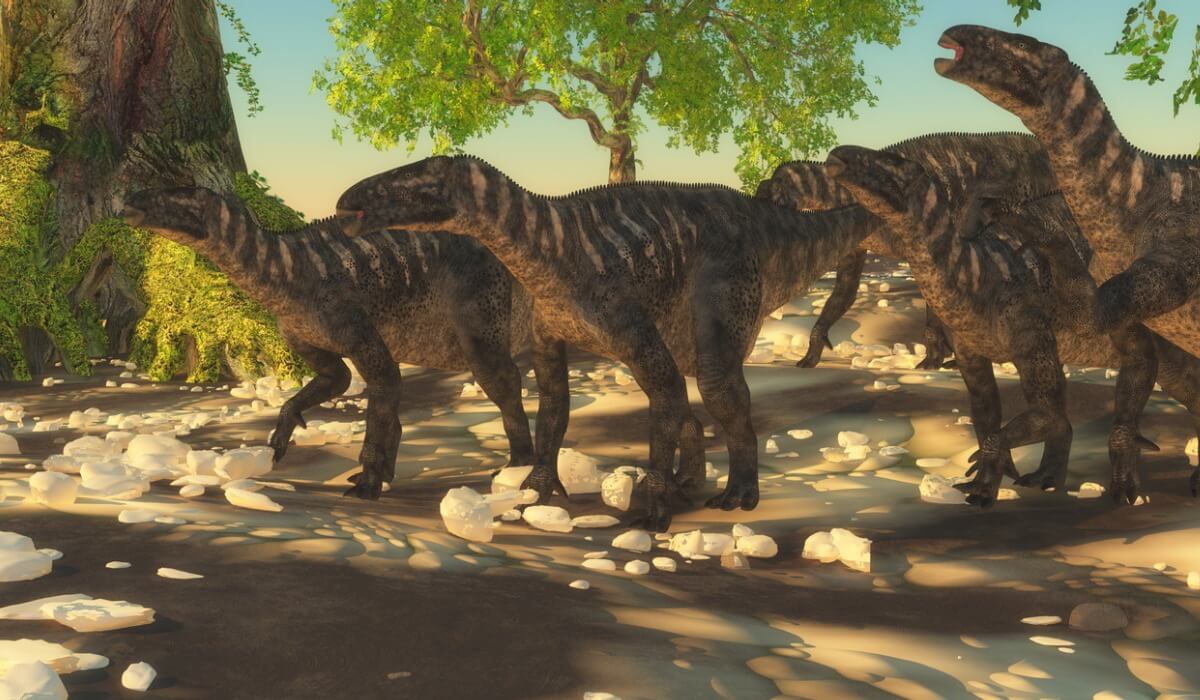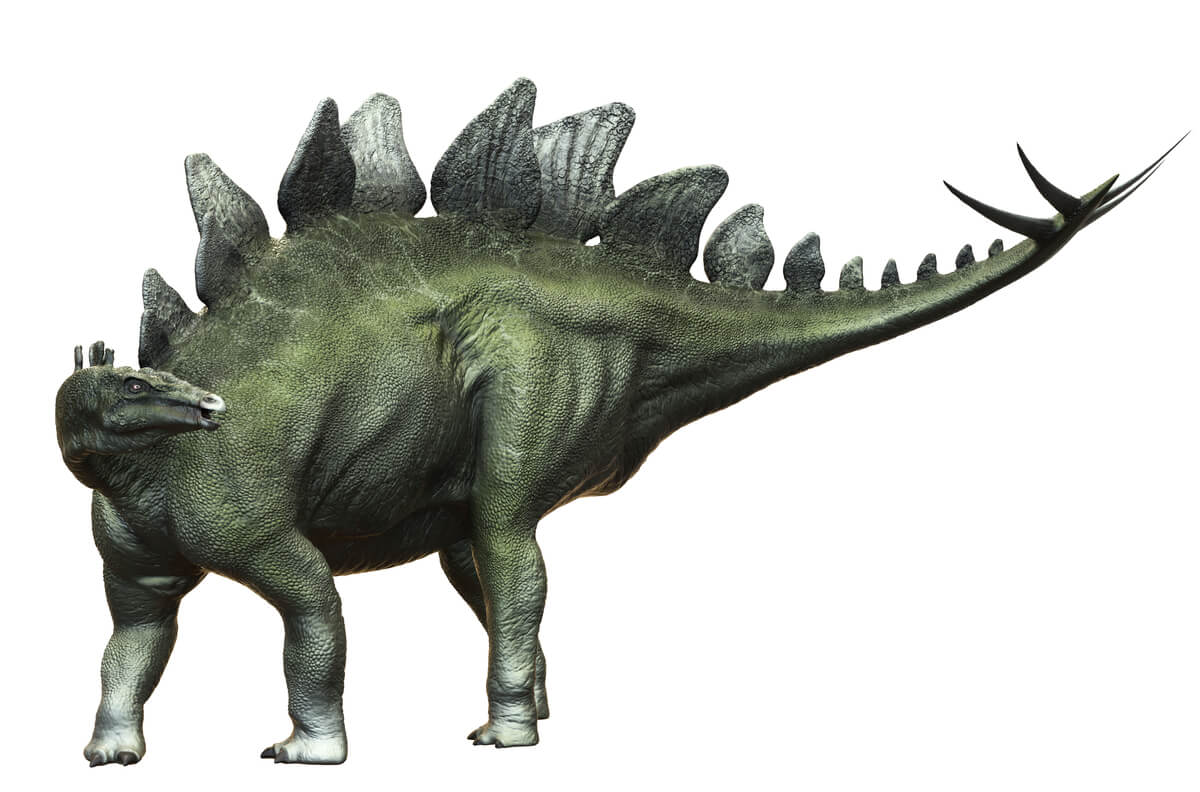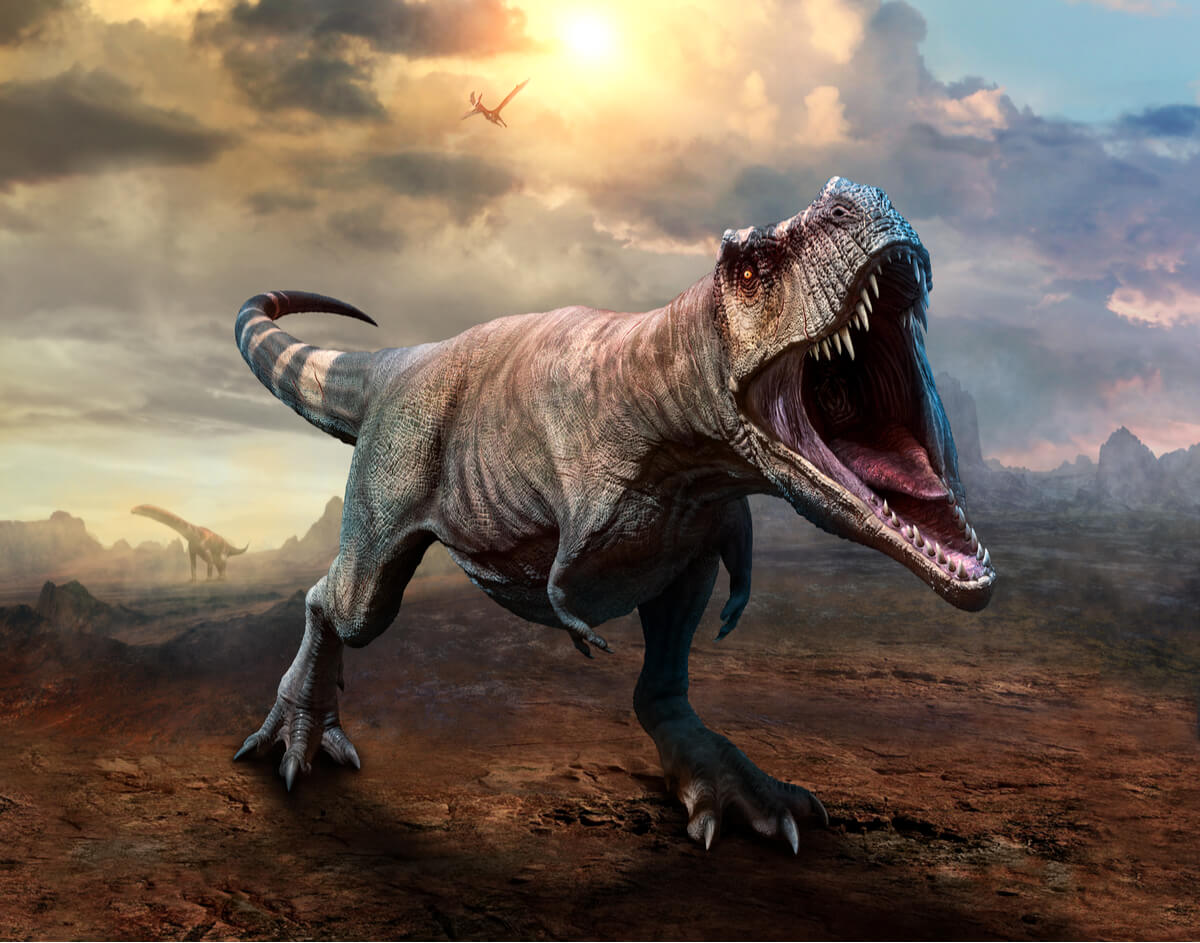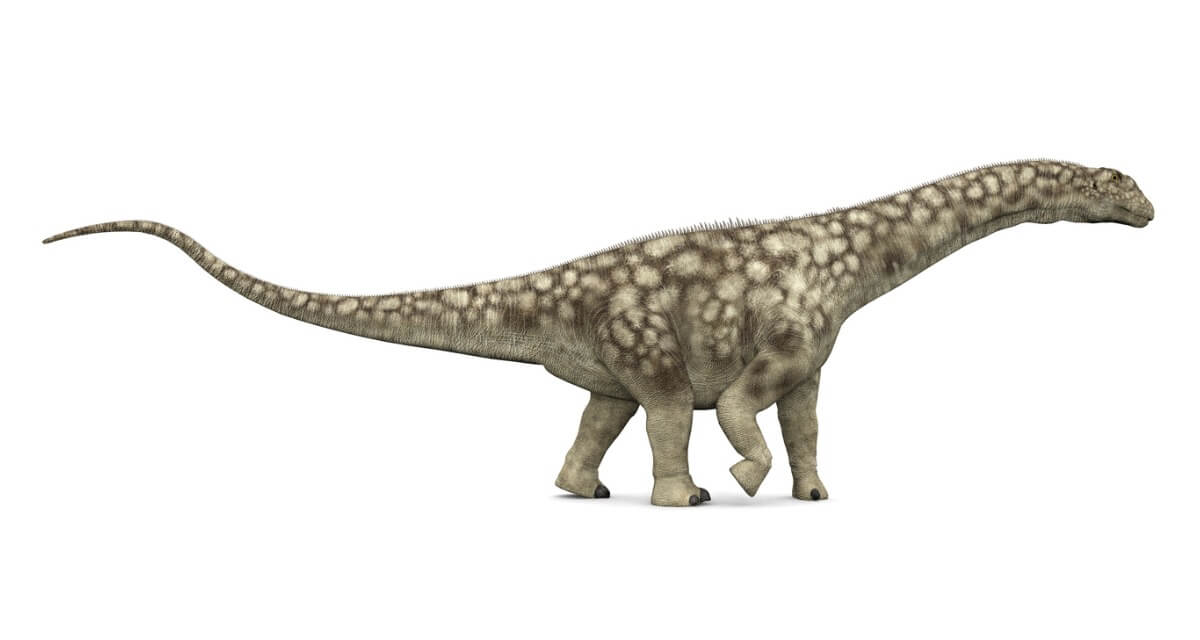How Many Types of Dinosaurs Existed?


Written and verified by the biologist Miguel Mata Gallego
Dinosaurs are one of the most popular groups of extinct animals. Their majesty, large size, and varied shapes make us humans fascinated with these creatures, even though we have never lived with them. The different types of dinosaurs are part of the collective imagination to this day.
Dinosaurs have made their appearance in many movies, series, and books of our popular culture. As a result, many of us can easily recognize a triceratops, a tyrannosaurus or a stegosaurus. But do we know what types of dinosaurs existed? How do they differ? In what eras did they live? We’ll answer all these questions and many more in these lines.
Origin and expansion of dinosaurs
The earliest fossil remains of dinosaurs date from about 230 million years ago. This is about 20 million years after the Permian-Triassic mass extinction wiped out 95% of life on Earth, including trilobites.
When dinosaurs first appeared, they weren’t the dominant land animals. Most resources were taken up by various types of archosaurs and therapsids, animals related to dinosaurs, but with different characteristics.
However, dinosaurs gradually gained an evolutionary advantage. By the Jurassic period, they were already the dominant terrestrial vertebrates. At the beginning of their existence, all the continents were united in a single land mass known as Pangaea.
Continental drift did its work and gradually the configuration of the continents became more similar to that of today. This caused an enormous diversification in the types of dinosaurs that existed on Earth, as we’ll see below.
The 2 great types of dinosaurs
Throughout the 19th century, the discovery of fossils of large dinosaurs opened the door to past worlds. The fossils were not only an endorsement of evolutionary theories, but an opportunity to discover their mechanisms. As of 2016, it is estimated that there were almost 7000 dinosaur species recorded (fossils), although it’s believed that many more are missing.
In 1887, the paleontologist Harry Seeley determined that dinosaurs could be divided into 2 large groups. On the one hand, we have the saurischians – dinosaurs with reptilian hips. These animals had a triangular pelvis, oriented towards the upper part of the body, similar to that of today’s reptiles.
On the other hand, we have the ornithischians – or bird-hipped dinosaurs. Their pelvis was similar to that of today’s birds, with the pelvis oriented towards the back of the body. In the following section, we’ll tell you more curiosities and characteristics of these 2 large groups, as well as some dinosaur species that belong to them.
The ornithischians: one of the types of bird-hipped dinosaurs
As we have already told you, the ornithischians are the bird-hipped dinosaurs. Despite this, they aren’t the direct ancestors of today’s birds, as their entire lineage disappeared in the extinction that wiped out the dinosaurs.
The main characteristic of the ornithischians was their diet: they were almost all herbivorous dinosaurs. In addition, they were the dominant group in the Cretaceous era, the final era of the dinosaurs. Within this group, we can distinguish the following:
1. Neornithischians
This group of dinosaurs is incredibly diverse and includes such well-known species as the majestic Iguanodon – one of the first dinosaurs to be discovered – which could reach a height of 10 meters (33 feet) and weigh 3 tons. Also belonging to this group is the well-known Triceratops, a dinosaur with 3 horns on its face, with many similarities to a rhinoceros. Other well-known specimens are the following:
- Heterodontosaurus
- Lesothosaurus
- Agilisaurus
- Jeholosaurus
- Thescelosaurus

2. Thyreophorans
The thyreophorans are a relatively unknown group of dinosaurs. They were almost all quadrupeds and stood out for having dorsal armor on their backs, with spines or plates as protection. Within this group, the stegosaurus stands out, a curious dinosaur with incredible bony plates on its back. Other members of this group are:
- Scutellosaurus
- Scelidosaurus
- Lusitanosaurus
- Ankylosaurs
- Huayangosaurus

Saurischians: the ancestors of birds
Saurischians, or reptile-hipped dinosaurs, were one of the most varied and numerous types of dinosaurs. They ranged from herbivorous dinosaurs – such as Diplodocus – to fearsome predators such as Allosaurus.
Saurischians were the most common dinosaur group in the Triassic and Jurassic, the eras where dinosaurs appeared and became predominant, respectively.
According to numerous experts, most of today’s birds are descended from this group. Therefore, we could say that dinosaurs haven’t become extinct from the face of the Earth, but live among us covered with feathers. In this group of dinosaurs, we find the following representatives.
1. Theropods: the most lethal types of dinosaurs
Theropods are dinosaurs of various types, with the common characteristic of having 3 toes on their limbs. At first, they were bipedal animals, such as the fearsome and highly intelligent Velociraptor. Later, this group eventually diversified and gave rise to flying dinosaurs, such as Pterodactylus.
Within this group were predatory and carnivorous dinosaurs, some as fearsome as Tyrannosaurus Rex, the king of dinosaurs who terrorized all the animals that lived with it.

2. Sauropodomorphs
Sauropodomorphs are a type of quadruped dinosaur. They were large herbivores, with an incredible length that could reach 30 meters (100 feet). Within this group, we find the Diplodocus or Argentinosaurus, herbivorous dinosaurs with large bodies and very long necks.

In conclusion, we can say that the different types of dinosaurs that existed are incredibly varied. These huge reptiles diversified little by little and had different ways of living and feeding.
Dinosaurs are one of the most popular groups of extinct animals. Their majesty, large size, and varied shapes make us humans fascinated with these creatures, even though we have never lived with them. The different types of dinosaurs are part of the collective imagination to this day.
Dinosaurs have made their appearance in many movies, series, and books of our popular culture. As a result, many of us can easily recognize a triceratops, a tyrannosaurus or a stegosaurus. But do we know what types of dinosaurs existed? How do they differ? In what eras did they live? We’ll answer all these questions and many more in these lines.
Origin and expansion of dinosaurs
The earliest fossil remains of dinosaurs date from about 230 million years ago. This is about 20 million years after the Permian-Triassic mass extinction wiped out 95% of life on Earth, including trilobites.
When dinosaurs first appeared, they weren’t the dominant land animals. Most resources were taken up by various types of archosaurs and therapsids, animals related to dinosaurs, but with different characteristics.
However, dinosaurs gradually gained an evolutionary advantage. By the Jurassic period, they were already the dominant terrestrial vertebrates. At the beginning of their existence, all the continents were united in a single land mass known as Pangaea.
Continental drift did its work and gradually the configuration of the continents became more similar to that of today. This caused an enormous diversification in the types of dinosaurs that existed on Earth, as we’ll see below.
The 2 great types of dinosaurs
Throughout the 19th century, the discovery of fossils of large dinosaurs opened the door to past worlds. The fossils were not only an endorsement of evolutionary theories, but an opportunity to discover their mechanisms. As of 2016, it is estimated that there were almost 7000 dinosaur species recorded (fossils), although it’s believed that many more are missing.
In 1887, the paleontologist Harry Seeley determined that dinosaurs could be divided into 2 large groups. On the one hand, we have the saurischians – dinosaurs with reptilian hips. These animals had a triangular pelvis, oriented towards the upper part of the body, similar to that of today’s reptiles.
On the other hand, we have the ornithischians – or bird-hipped dinosaurs. Their pelvis was similar to that of today’s birds, with the pelvis oriented towards the back of the body. In the following section, we’ll tell you more curiosities and characteristics of these 2 large groups, as well as some dinosaur species that belong to them.
The ornithischians: one of the types of bird-hipped dinosaurs
As we have already told you, the ornithischians are the bird-hipped dinosaurs. Despite this, they aren’t the direct ancestors of today’s birds, as their entire lineage disappeared in the extinction that wiped out the dinosaurs.
The main characteristic of the ornithischians was their diet: they were almost all herbivorous dinosaurs. In addition, they were the dominant group in the Cretaceous era, the final era of the dinosaurs. Within this group, we can distinguish the following:
1. Neornithischians
This group of dinosaurs is incredibly diverse and includes such well-known species as the majestic Iguanodon – one of the first dinosaurs to be discovered – which could reach a height of 10 meters (33 feet) and weigh 3 tons. Also belonging to this group is the well-known Triceratops, a dinosaur with 3 horns on its face, with many similarities to a rhinoceros. Other well-known specimens are the following:
- Heterodontosaurus
- Lesothosaurus
- Agilisaurus
- Jeholosaurus
- Thescelosaurus

2. Thyreophorans
The thyreophorans are a relatively unknown group of dinosaurs. They were almost all quadrupeds and stood out for having dorsal armor on their backs, with spines or plates as protection. Within this group, the stegosaurus stands out, a curious dinosaur with incredible bony plates on its back. Other members of this group are:
- Scutellosaurus
- Scelidosaurus
- Lusitanosaurus
- Ankylosaurs
- Huayangosaurus

Saurischians: the ancestors of birds
Saurischians, or reptile-hipped dinosaurs, were one of the most varied and numerous types of dinosaurs. They ranged from herbivorous dinosaurs – such as Diplodocus – to fearsome predators such as Allosaurus.
Saurischians were the most common dinosaur group in the Triassic and Jurassic, the eras where dinosaurs appeared and became predominant, respectively.
According to numerous experts, most of today’s birds are descended from this group. Therefore, we could say that dinosaurs haven’t become extinct from the face of the Earth, but live among us covered with feathers. In this group of dinosaurs, we find the following representatives.
1. Theropods: the most lethal types of dinosaurs
Theropods are dinosaurs of various types, with the common characteristic of having 3 toes on their limbs. At first, they were bipedal animals, such as the fearsome and highly intelligent Velociraptor. Later, this group eventually diversified and gave rise to flying dinosaurs, such as Pterodactylus.
Within this group were predatory and carnivorous dinosaurs, some as fearsome as Tyrannosaurus Rex, the king of dinosaurs who terrorized all the animals that lived with it.

2. Sauropodomorphs
Sauropodomorphs are a type of quadruped dinosaur. They were large herbivores, with an incredible length that could reach 30 meters (100 feet). Within this group, we find the Diplodocus or Argentinosaurus, herbivorous dinosaurs with large bodies and very long necks.

In conclusion, we can say that the different types of dinosaurs that existed are incredibly varied. These huge reptiles diversified little by little and had different ways of living and feeding.
All cited sources were thoroughly reviewed by our team to ensure their quality, reliability, currency, and validity. The bibliography of this article was considered reliable and of academic or scientific accuracy.
- Starrfelt, J., & Liow, L. H. (2016). How many dinosaur species were there? Fossil bias and true richness estimated using a Poisson sampling model. Philosophical Transactions of the Royal Society B: Biological Sciences, 371(1691), 20150219.
- Barrett, P. M., McGowan, A. J., & Page, V. (2009). Dinosaur diversity and the rock record. Proceedings of the Royal Society B: Biological Sciences, 276(1667), 2667-2674.
- Farlow, J. O., Dodson, P., & Chinsamy, A. (1995). Dinosaur biology. Annual Review of Ecology and Systematics, 445-471.
- Universidad Nacional Autónoma de México. (2001) Tipos de dinosaurios. Recuperado el 5 de junio de 2022, disponible en: http://www.revista.unam.mx/vol.2/num4/sabias1/tipos.html
- Norman, D. B., Witmer, L. M., & Weishampel, D. B. (2004). Basal ornithischia. The dinosauria, 2, 325-334.
- Chiappe, L. M., & Vargas, A. (2003). Emplumando dinosaurios: la transición evolutiva de terópodos a aves. El hornero, 18(1), 1-11.
- Sereno, P. C. (1997). The origin and evolution of dinosaurs. Annual Review of Earth and Planetary Sciences, 25(1), 435-489.
This text is provided for informational purposes only and does not replace consultation with a professional. If in doubt, consult your specialist.








